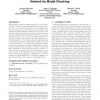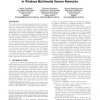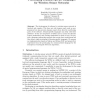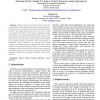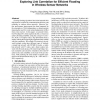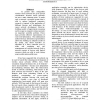PEWASUN
2007
ACM
14 years 27 days ago
2007
ACM
Wireless Sensor Network (WSN) technology is now mature enough to be used in numerous application domains. However, due to the restricted amount of energy usually allocated to each...
MOBIMEDIA
2007
14 years 27 days ago
2007
The recent advances in miniaturization and the creation of low-power circuits, combined with small-sized batteries have made the development of wireless sensor networks a working ...
MODELLIERUNG
2008
14 years 27 days ago
2008
The development of software for wireless sensor networks is involved and complex. This does not only impose much work on programmers but also prevents domain experts from directly ...
MASCOTS
2008
14 years 27 days ago
2008
Lifetime of a wireless sensor network is affected by key factors such as network architecture, network size, sensor node population model, data generation rate, initial battery bu...
ICWN
2007
14 years 27 days ago
2007
- Wireless sensor networks have been widely used in many fields with the developments of the related techniques. But there are many problems in traditional single sink sensor netwo...
INFORMATIKTAGE
2008
14 years 27 days ago
2008
: Economical power use is essential to allow for long-lasting operation of wireless sensor networks. This applies equally to linear sensor networks as they emerge when sensors are ...
ICWN
2008
14 years 27 days ago
2008
Energy efficient operations are essential to increase the lifetime of wireless sensor network. A clustering-based protocol is one approach that reduces energy by a data aggregation...
NSDI
2010
14 years 28 days ago
2010
Existing flooding algorithms have demonstrated their effectiveness in achieving communication efficiency and reliability in wireless sensor networks. However, further performance ...
EUSFLAT
2007
14 years 28 days ago
2007
The embedded soft computing approach in wireless sensor networks is suggested. This approach means a combination of embedded fuzzy logic and neural networks models for information...
EUSFLAT
2007
14 years 28 days ago
2007
At present time configurable wireless sensor networks are given special consideration. Wireless sensor networks are now a static elements union. To make such a network a powerful ...
